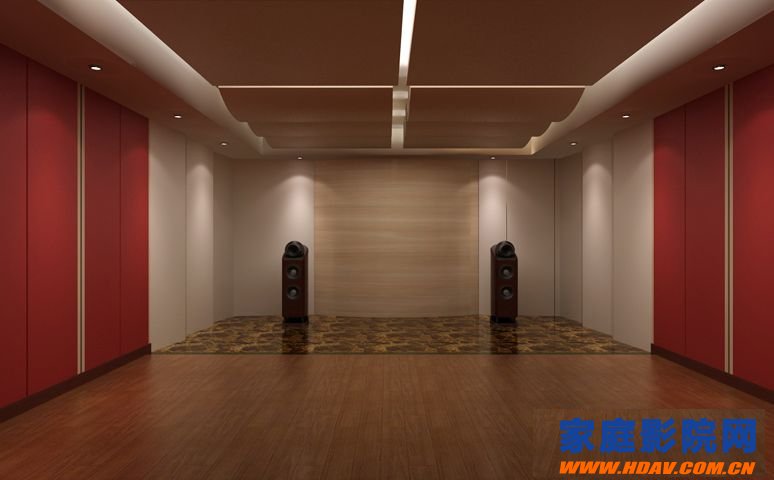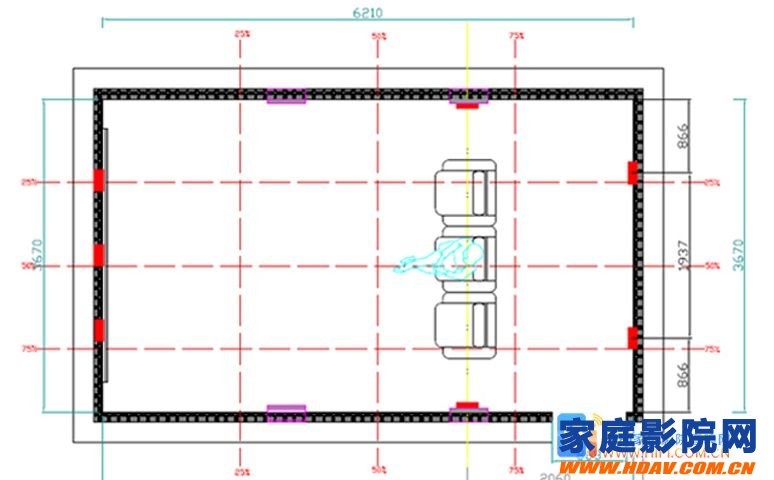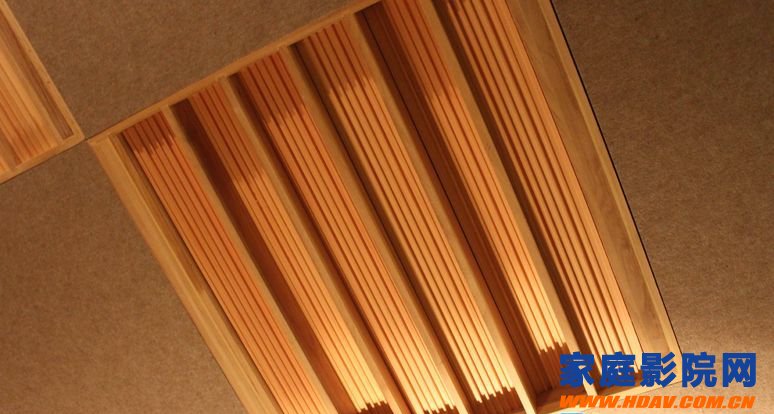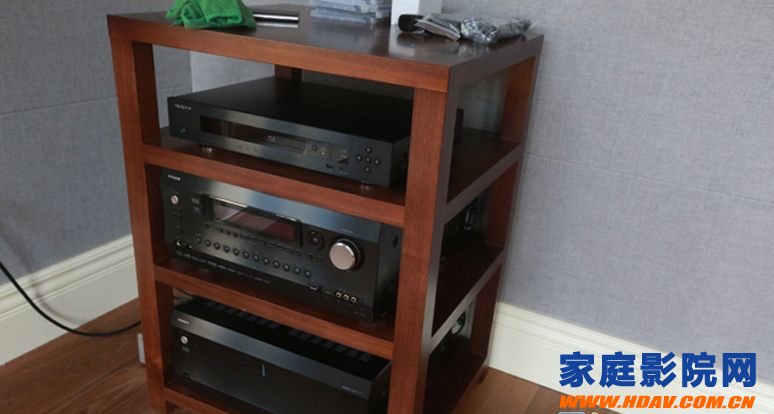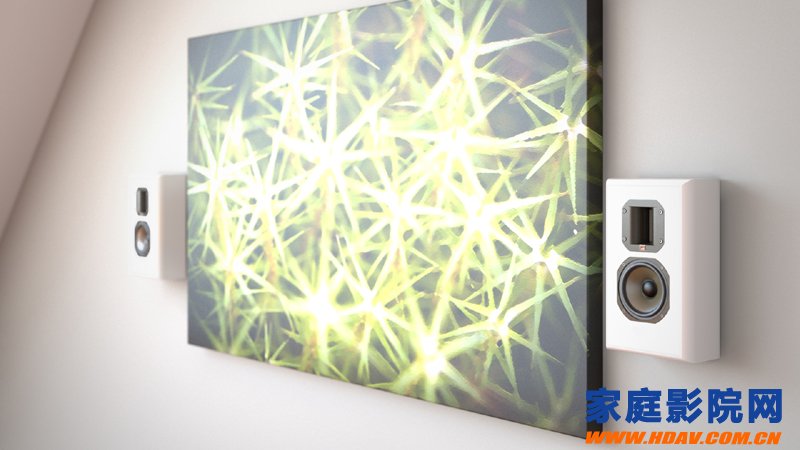[Home Theater Network HDAV.com.cn] For many entry enthusiasts , although they have a set of tens of thousands or hundreds of thousands of home theater equipment, but in the process of assembly , the use of improper measures to make the whole set of equipment lost The original meaning. In addition, nowadays prices have risen and upgrading theaters has become a long-awaited desire of many poor fans. At this time, you can only upgrade your theater with some of the most cost-effective measures. Whether it is expensive or cheap home theater equipment to get the best results, the final is inseparable from the arrangement, and in the process of arrangement, avoid common mistakes and avoid losing the loss. The following are the common improper measures in the home theater design process, hoping to give a reference to the entry enthusiasts. First, improper audiovisual space conditions Many friends who have just come into contact with home theater design often have this kind of question: "My family's equipment is already very good, but the effect is not always good. It doesn't sound like the effect of the original business presentation. Am I deceived?" Most of the above situations are not caused by you being deceived, but your audiovisual space is not properly arranged. For example, the space should not be too small or too large, and sound absorption and sound insulation materials should be selected appropriately. 1. Improper size and proportion of the listening environment The best shape of the listening environment is rectangular, and the optimal area is about 18~40 square meters. Also consider whether the ratio of height, width, and length of the room conforms to the Golden Rule, such as 1:1.25:1.6, 1:1.6:2.5, or 1:2.5:3.2. It is absolutely impossible to choose a square or the size of one side is just twice the room on the other side, and the room should not be too high, because the sound tends to form bad reverberation when the sound spreads in a higher space, and the cost of installing the sound absorbing material is also increased. . Of course, the size and shape of the general room have been fixed by real estate developers, and it is impossible to change it. But we can improve the size of the room by adding, adjusting the ceiling, adding the wall panels, and making wall panels. At present, it is very common to use wooden cabinets or wooden boards to form compartments, and to transform the length, width and height of the audio-visual room into ideal conditions for the best results. 2, improper selection of sound-absorbing materials Listening to the sound space requires sound absorption measures, which is known to many people. However, when choosing sound-absorbing materials, many people will choose one by one, and finally it will be counterproductive. In general, choosing a thicker sound absorbing material is good for absorbing low frequency sound, while a thinner material is good for absorbing high frequency. Among them, carpet is the most common sound absorbing material. The carpet has obvious absorption effect on medium frequency and medium frequency, and has little effect on low frequency absorption. If the area is too large when the carpet is set, the details of the sound will be lost. In addition, curtains and hollow slabs are also very common sound absorbing materials. As a decorative object, the hanging curtain not only has a sound absorbing function, but also prevents partial sound transmission. The thicker the curtain, the larger the suction volume. Among them, the wrinkled hanging curtain can obviously increase the suction volume, and the larger the unfolded area of ​​the hanging curtain, the more obvious the sound absorption. The curtain has a large effect on the sound absorption of the medium and high frequency, and the listener can adjust the degree of expansion of the curtain to control the absorption of the high intermediate frequency sound. Hollow slab refers to a variety of siding, wooden floors with grids, furniture placed indoors, which can absorb the low-frequency components. 3. Improper selection of diffusion materials Someone said: "My space conditions and sound absorption conditions are doing very well, but the sound sounds a bit harsh, not stable and soft." The reason is that you have not done proliferation measures. Simply put, diffusion is the ability to The sounds of the ups and downs like the rugged rocks smoothed into the beach-like feeling. If the audio-visual room is not a good diffuse sound field, the sound in different places or different frequencies in the room will be uneven. Some frequencies or some positions are especially strong, while others are very weak, which will cause it to be restored from the speakers. The flat frequency response is smeared, so the studio must be arranged to have a diffuse sound field. We know that any convex surface has the ability to diffuse sound waves, including bevels, curved surfaces, and convex arc surfaces, so diffuse materials must be selected before home theater diffusion measures. Cylindrical, triangular, hemispherical, polyhedral, pyramidal and other objects are good diffusion materials, but it should be noted that the material of the diffuser should be as large as possible and have a certain rigidity, such as concrete, plastering brick, Marble, granite; solid wood should be used if wood is used; as far as possible, it is not necessary to cast the diffuser with gypsum. Although the production cost is very low, it will produce metallic sounding, which is unfavorable to the sound. 4, improper noise reduction method Noise is inevitable in space, and many people think that sound absorption is the best way to remove noise. This is not the case. Sound absorption measures only absorb some noise. In order to achieve a perfect listening environment, sound insulation measures should be set up. First of all, the wall should adopt a heavy and thick structure to improve the ability to isolate the air. If possible, a double wall can be provided, such as installing a sound absorbing panel on the inside of the wall to keep a certain distance from the wall, which is also a double wall. Secondly, setting the sound insulation door and window is the key to noise reduction. Increase the weight and thickness of the door to improve sound insulation. If a double door is set and the sound absorbing material is filled in the middle, the sound insulation effect will be more obvious. In addition, the windows of the audio-visual room can be transformed into two or even three-layer glass windows. The glass and the frame are connected by a special-shaped rubber strip, and the sound insulation performance can be compared with the brick wall effect of 24cm thick. In addition, it is also possible to stick sealing strips on the door seams and window slits. This is the easiest way to handle sound insulation. Finally, the noise upstairs and downstairs. Upstairs and downstairs noise can be transmitted to the listening room through the ceiling and floor. We can install the ceiling to isolate the noise from the building and isolate the noise from the downstairs by carpeting. Carpeting also prevents sound reflections caused by too many smooth surfaces in the room. Need to pay attention, if you want to reduce noise, vibration isolation is a must. Therefore, cavity ceilings and open cabinets cannot be found in the audio-visual room because they are actually cavities that are easily resonating with some frequencies in music. At the same time, in order to avoid the tremor sound, it is best to use solid wood and composite sheet furniture in the room, and all kinds of items should be stabilized and closed. Second, the details can not be ignored, home theater design top ten mistakes 1. Put the equipment in the cabinet Many people install a lot of beautiful cabinets when they decorate their homes. In order to achieve the overall aesthetic effect, it is common practice to put the equipment in the cabinet. This method is wrong. When the equipment is placed in the cabinet, it will be disturbed by the space inside the cabinet and the tone will become cloudy. In addition, the equipment will also be overheated due to obstruction of air circulation, making the equipment susceptible to aging and getting sick. Finally, it is not convenient to change the line of the pumping machine. It is easy to break the equipment when moving out and moving in, and it is easy to cause a short-circuit abnormality. In addition to not anti-equipment inside the cabinet, it is not good to embed the speaker inside the wall, which will make the sound hard. 2, put the equipment stacked In order to save space, some fans like to put DVD players, amplifiers, tuners, digital-to-analog converters, etc. on top of each other. The result of this kind of operation will cause the front stage to be disturbed and inductive, which will seriously affect the transparency and cleanness of the sound quality. The whole system will have a sharp separation force, and the tone will be hard and have a strong sense of oppression. Among them, especially the interference between the DVD player and the power amplifier is the most serious, which will lead to a hard tone and a sense of oppression. The right thing to do is to place the equipment on a layered audio stand or theater platform. 3. Place the equipment on top of marble or glass The density of marble is low, the harmonic vibration is high, and the sound quality of any equipment will be greatly buckled. The density of glass is higher than that of marble, but if it is not thick enough, the harmonic shock caused by it is more serious. If it must be glass, the thickness needs to be 2.5CM or more. Granite is preferred for carrying equipment, but the thickness of granite is preferably above 3 cm. 4, use equipment to accommodate furniture placement Some people will arrange the position of the sound because there are other furniture in the room. The result is that the audiovisual effect is affected. The correct way is to reposition the furniture to ensure that everyone can see the screen and hear the sound of all the speakers. 5, mistakenly placed speakers Speakers are important equipment for home theaters. Once placed in an improper position, it will seriously affect the hearing effect. First of all, you can't directly point the back tone to the audience. The rear speakers should be on the sides of the back of the listener, and they should not be placed too close together, which will limit the sound field and weaken the effect of loopback stereo. Second, you can't use a non-directional speaker in front. The front speakers must be directional to provide the best sound position in front. The center speaker is the main force for expressing human voice, and is usually placed directly above or below the TV screen. However, due to magnetic field interference and mutual vibration between the speaker and the TV, it is best to place the center speaker on a separate stand slightly above the TV screen, but the position should not be too high. Since the bass directivity is very weak, there is generally no hard requirement for the placement of the woofer. If you are not a professional enthusiast, the position of the woofer can be as long as it doesn't matter. However, it should be noted that many small speakers currently do not have good sound quality. If you use a small speaker with a subwoofer, you only have a lower quality subwoofer. In addition, you can't put the TV or the projection screen in the corner position. This will make the front speakers of the house shadow not in the ideal position, and the surround sound will be blocked. 6, long-term does not boot In order to save electricity, some people cut off the power after using the equipment. Although this is true, users living in the South need to pay attention. In the southern region, during the rainy season, the weather is humid, and the humidity is too high, which is the natural enemy of audio-visual equipment. Excessive moisture in the air can penetrate into every part of the audio-visual equipment, causing adverse effects. At this time, if you don't use the equipment for a long time, turn it on, press the switch, let it work for a while, use the heat inside the machine to disperse the moisture. 7, the power plug is positive or negative Many people may ignore the influence of the positive and negative poles of the power supply on the whole system. A set of positive and negative processing systems is well-defined, accurate and smooth. The so-called positive and negative of the power plug refers to the correct connection of the zero line and the live line of the AC, which is the absolute phase of the so-called equipment. If the equipment of a system is not in the same power phase, the high frequency of the sound will be blurred and the bounce of the low frequency will be poor. The main methods of measuring positive and negative are: firstly, find the 0 line of the socket used, and unplug all the wires of the tested equipment except the power cord. Use the multimeter's AC file to measure the housing between the equipment and the power supply 0 line. Voltage, write down the reading, then plug the power cord of the equipment into the socket, then write down the voltage between the chassis and the 0 line, and take the correct reading. 8, the wiring is not strong, circular or dirty Some friends think that the wire can be connected as long as it is not so close as to whether the joint is not strong or the wire is placed. This kind of thinking is wrong. If the wire is looped, side by side, and the direction is disordered, it will interfere with each other, and there will be noise or even hum. In addition, if the joint is not strong, the joint is prone to oxidation or dirty, which also affects the sound quality. 9, should not take it for granted Many of the mistakes that "mi" beginners want to make when they first set up a theater are taken for granted, subjectively speculating that things are probably or should be. This kind of subjective judgment is often untenable, and mistakes are often made during the formation process. Therefore, if it is not a connoisseur, even if the room is decorated with luxury and beauty, the sound is difficult to achieve the best results. 10, should not blindly imitate In the home theater design process, the most taboo is not to start from the actual, blindly imitating others, such as people's home long signal line, short speaker line effect is good, because its front and rear and the laser are balanced. If your equipment is not balanced and you want to imitate it, it is difficult to achieve the same effect. Third, the wrong design lighting The basic requirements of the home theater design for the environment are "black, empty, and quiet." “Empty†refers to the room to expand the room's clean space as much as possible, so as to create a grand sound field, so as not to interfere with the viewer's sight. “Static†refers to the intrusion of various sounds or noises that should be isolated from the outdoors as much as possible. At the same time, there should be no extraneous sounds in the room to avoid interference with the sound reproduction effect. The above two kinds of improper measures that need attention. We have already mentioned that "empty" and "quiet" are mainly for the listening environment, while "black" is for the lighting environment. The dark environment is conducive to reproduce the details and vivid colors of the image under low light conditions. When it comes to the “blackness†of the environment, many users will illusoryly believe that the “black†created in the home theater design should be completely black like the viewing environment of the cinema. In fact, for home theater design, there is no need to create a completely dark environment. The reason is that the screen of the cinema is larger than the viewer's perspective, while the screen or home projection screen of the ordinary flat-panel TV is smaller than the viewer's field of view, so between the bright TV screen or the projection screen and the dark background, There must be a transition so that the eyes are not overly stressed, and it is not easy to fatigue when viewed for a long time, and it is also advantageous for obtaining the best color resolution. In general, indoor lighting designed by home theaters is better with low light. It is important to note that the ambient light should not be directly on the screen to prevent the reflection on the screen from affecting the viewing effect. Under normal circumstances, it is recommended that the home theater design room should be installed in addition to a low-illumination light of 15W or less on the side of the TV (beyond each other as far as possible, the light bulb is best to automatically adjust the brightness), there should be no other direct illumination. Light. In order to block sunlight or other outdoor light, curtains, blinds, etc. can be installed on the window. The curtain material can be made of thick fabric such as velveteen, and the color tone is deep and soft, and the blinds should be light-shielded. Lighting is best not to use scattering, and the better way to project is to mount the fluorescent spotlight on the floor in front of the TV and to the wall behind the TV or projector. More fresh and fun home theater information, please pay attention to home theater network http:// (WeChat: cnhifi), the country's most influential home theater audio player interactive media website. Led Panel Light,Led Panel Lamp,Smart Led Panel Light,Led Ceiling Panel Light Changxing Fanya Lighting Co.,Ltd , https://www.fyledlights.com